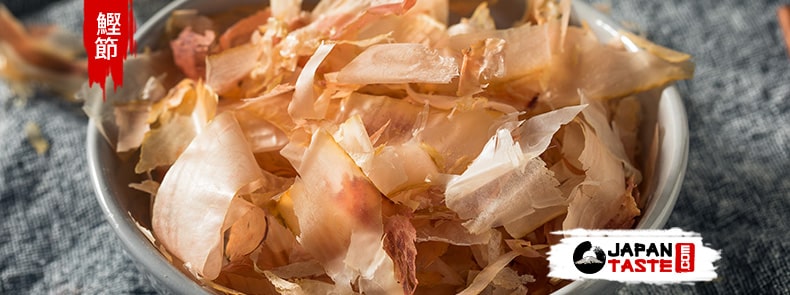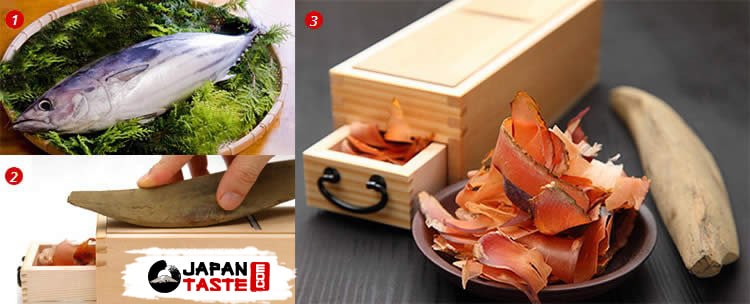The katsuobushi is a preparation of dried bonito, it is omnipresent in Japanese cuisine and is found in particular in the dashi. Discover its characteristics:
- The katsuobushi or dried bonito
- The preparation of katsuobushi
- Dried bonito or dancing fish
- The taste of dried bonito
- Bonito is a popular fish in Kochi Prefecture in Japan
The katsuobushi or dried bonito
 The katsuobushi “鰹節” is bonito, a fish of the scombridae family, a close cousin of the tuna. This bonito is dried, fermented then smoked. It is then finely grated to obtain pale pink flakes before being packaged.
The katsuobushi “鰹節” is bonito, a fish of the scombridae family, a close cousin of the tuna. This bonito is dried, fermented then smoked. It is then finely grated to obtain pale pink flakes before being packaged.
The katsuobushi, is one of the bases of the dashi and many other japanese recipes, hence its importance in Japanese cuisine.
The preparation of katsuobushi
Step 1: Bonito are fished from spring to autumn on the wide Japanese coasts. Once captured, they are boiled and stripped of their skins and bones. They are then dried and smoked in the sun for 6 months until they become hard blocks like wood.
Step 2: The resulting block of bonito called Karebushi “枯れ節” is then grated using a Katsuobushi kezuriki “鰹節削り器”, a utensil that looks like a mandolin. This utensil is usually made of wood, the dried bonito is grated on top and the pieces are then placed inside the Katsuobushi kezuriki. A drawer is used to collect the bonito shavings.
Step 3: These bonito shavings are quite thick and are called kezurikatsuo “削りかつお” in Japanese, they are mainly used in the preparation of dashi.
Dried bonito or dancing fish
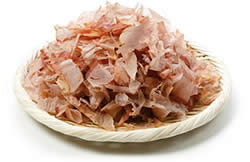 There are also finer cut bonito shavings called hanakatsuo ” 花かつお” literally bonito flower, these are much more widespread in Japan and sold in bag form. Moreover, these shavings are used in many Japanese dishes. The dried bonito is sprinkled on these hot dishes, the heat has the effect of making them “dance” hence its nickname “dancing fish”.
There are also finer cut bonito shavings called hanakatsuo ” 花かつお” literally bonito flower, these are much more widespread in Japan and sold in bag form. Moreover, these shavings are used in many Japanese dishes. The dried bonito is sprinkled on these hot dishes, the heat has the effect of making them “dance” hence its nickname “dancing fish”.
Its use is diversified in Japanese cuisine:
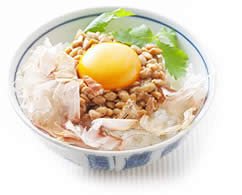 With Japanese rice in onigiri
With Japanese rice in onigiri- With tofu in Japanese dishes named Hiyayakko “ひややっこ”
- In okonomiyaki, kakutako and takoyaki
- On soba
- As a filling in furikake
- On Japanese soups
- On green beans…
You will have understood that the dried bonito is a product that accompanies almost all Japanese dishes. In addition to being very good, the dancing effect of katsuobushi will always surprise your guests.
The taste of dried bonito
As we have seen, bonito is a fish, but do these shavings taste like fish? Well no! They give a little smoky taste to your dishes and a little salty. The fishy taste disappears. In fact, it is considered as an umami flavour (tasty taste). No wonder it is one of the bases of dashi.
In Japan, dried bonito shavings are added very generously on hot dishes! Don’t hesitate at home to put a big handful of them on your dishes. You will find some very easily in Asian grocery stores or on the internet.
Bonito is a popular fish in Kochi Prefecture in Japan
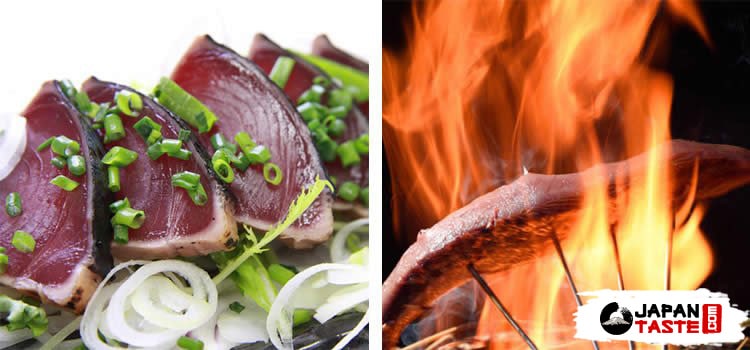
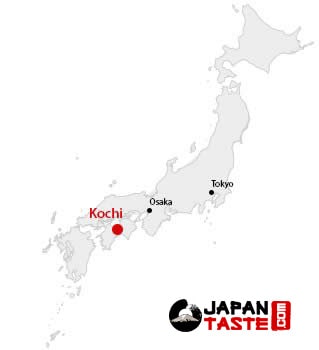
In Japan, bonito is also eaten raw. One of the specialties of Kochi Prefecture is katsuo no tataki “カツオのたたき”.
The bonito is very briefly seared back and forth in a flame or in a frying pan, then sliced and drizzled with a sauce. It is then generously accompanied by fresh herbs (chives, chopped ginger, Myoga, shiso, garlic, daikon…) to attenuate its powerful taste. The whole is fresh and delicious.
It is customary to toast the outside of the bonito while the inside remains raw. As soon as it is cooked, it is immersed in ice and served with a little wasabi and soy sauce.
You can easily find this dish in the izakaya of Kochi prefecture in Japan. The izakaya “居酒屋” are real Japanese style tapas bars. The atmosphere is relaxed and friendly.
Here is a video of the preparation of the dish katsuo no tataki. Impressive! No ?


